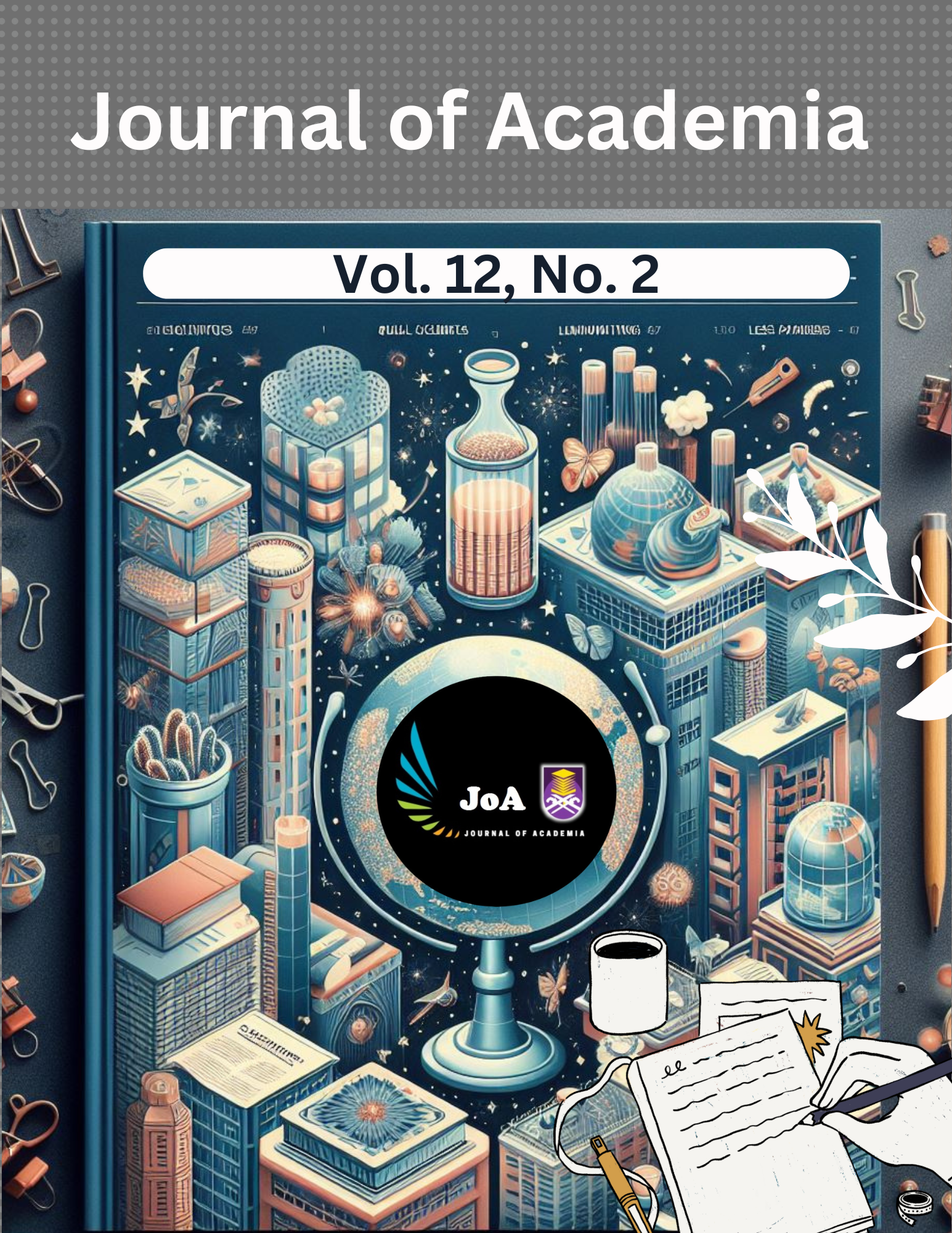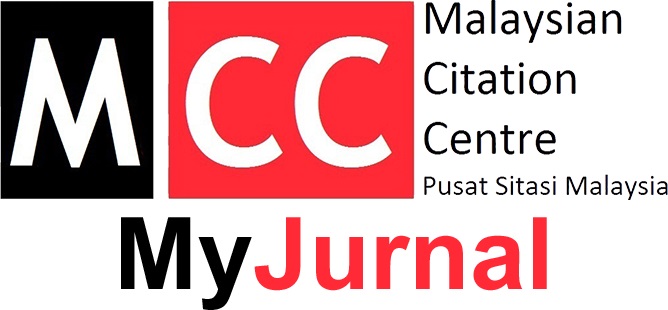SCREENING OF POTENTIAL BACTERIA WITH ANTAGONISM PROPERTIES ISOLATED FROM SOIL AND STREAM IN HUTAN UiTM CAWANGAN NEGERI SEMBILAN
Keywords:
Soil bacteria, stream water bacteria, antagonism activityAbstract
Infectious diseases caused by bacteria are increasing nowadays, and this cause the production of
synthetic drugs also in demand. However, synthetic drugs give side effects to some people, so to reduce
or as an alternative, biotherapeutic treatment can be used using bacteria taken from natural sources that
have not been explored by humans which are very sustainable. Therefore, bacteria which are common
microorganisms will help to serve critical roles in the health and operation of land and aquatic
ecosystems. The study was conducted at Hutan UiTM Cawangan Negeri Sembilan, Kuala Pilah Campus
to isolate and characterize the bacterial colonies from soil and stream. The main focus of this study is
to identify Gram positive bacteria with negative haemolytic activity and to determine the antagonism
activity against pathogenic bacteria. A total of 20 pure bacterial colonies were isolated from soil
samples, and 30 from stream samples collected at various locations. Gram positive bacterial
identification indicated that 12 out of the 20 soil colonies and 10 out of the 30 stream colonies exhibited
characteristics consistent with Gram positive bacteria. Haemolysis test and catalase test were conducted
on both Gram positive bacteria isolated from soil and stream samples where soil samples have seven
bacterial isolates and stream samples have eight isolates showed no hemolytic activity, while for
catalase test five and four bacterial isolates showed positive activity correspondingly. However, no
inhibition zones were observed in the antagonism assays of all isolates from both samples against
Escherichia coli, Staphylococcus aureus, and Pseudomonas aeruginosa. Although the antagonism
results were negative, this study contributes to our understanding of the microbial diversity in soil and
stream water ecosystems. Further research is recommended to refine the experimental procedures,
optimize conditions, and employ selective media for more targeted analysis. Such investigations will
help unravel the potential applications of bacteria present in soil and stream samples and their ecological
roles.
References
Ali, A., & Naseem, F. (2012). Isolation, cultivation, purification and identification of bacterial species from
microfauna of soil. Italian Journal of Public Health, 8(1). https://doi.org/10.2427/5643
Atanasov, A. G., Waltenberger, B., Pferschy-Wenzig, E. M., Linder, T., Wawrosch, C., Uhrin, P., Temml, V.,
Wang, L., Schwaiger, S., Heiss, E. H., Rollinger, J. M., Schuster, D., Breuss, J. M., Bochkov, V., Mihovilovic,
M. D., Kopp, B., Bauer, R., Dirsch, V. M., & Stuppner, H. (2015). Discovery and resupply of pharmacologically
active
plantderived natural products: A review. Biotechnology Advances, 33(8), 1582–1614.
https://doi.org/10.1016/j.biotechadv.2015.08.001
Abdulkadir, M., & Umaru, W. (2012). Screening and Isolation of the Soil Bacteria for Ability to Produce
Antibiotics. European Journal of applied sciences, 4(5), 211-215. http://idosi.org/ejas/4(5)12/5.pdf
and
Buthaina, J., Zeinab B., & Karaman, R. (2020). Resistance of Gram-Positive Bacteria to Current Antibacterial
Agents
Overcoming
https://doi.org/10.3390/molecules25122888
Approaches.
Molecules,
(12),
–2888.
Dalal, J., Lata, P., Kumari, A., & Kumar, A. (2022, April). Role of Soil Microbes in Disease Control and as a
Probiotics. International Journal of Innovative Science and Research Technology, 7(4), 635-637.
https://doi.org/10.5281/zenodo.6528144
Da Silva, R. F., Moutinho, B. L., Santos, D. a. D., Vasconcelo‐Rodrigues, I. S., Talamini, V., Fernandes, M., &
Fernandes, R. P. M. (2018). Using antagonistic soil bacteria and their cell-free filtrates to control the black rot
pathogen Xanthomonas campestris pv. campestris. Journal of Phytopathology, 166(7–8), 494–501.
https://doi.org/10.1111/jph.12709
Gagelidze, N. A., Amiranashvili, L. L., Tinatin Sadunishvili, G. Kvesitadze, Urushadze, T. F., & Kvrivishvili, T.
O. (2018). Bacterial composition of different types of soils of Georgia. Annals of Agrarian Science, 16(1), 17–21.
https://doi.org/10.1016/j.aasci.2017.08.006
Gislin, D., Dorairaj, S., Raj, G. A., & Baskar, K. (2018). Antibacterial activity of soil bacteria isolated from Kochi,
India and their molecular identification. Journal of Genetic Engineering and Biotechnology, 16(2), 287–294.
https://doi.org/10.1016/j.jgeb.2018.05.010
Jyoti, K., Mehandia, S., Singh, G., Raina, A. K., & Shailendra K. A. (2018). Catalase enzyme: Application in
bioremediation and food industry. Biocatalysis and Agricultural Biotechnology. 16, 192–199.
https://doi.org/10.1016/j.bcab.2018.07.035
Kristensen, K., Ward, L., Mogensen, M. L., & Cichosz, S. L. (2023). Using image processing and automated
classification models to classify microscopic gram stain images. Computer Methods and Programs in
Biomedicine.Update, 3,100091. https://doi.org/10.1016/j.cmpbup.2022. 100091
Kowalska-Krochmal, B., & Dudek-Wicher, R. (2021). The Minimum Inhibitory concentration of antibiotics:
Methods, interpretation, clinical relevance. Pathogens, 10(2), 165. https://doi.org/10.3390/pathogens100 20165
Liu, J., Cui, X., Liu, Z., Guo, Z., Yu, Z., Yao, Q., Sui, Y., Jin, J., & Liu, X. (2019). The Diversity and Geographic
Distribution of Cultivable Bacillus-Like Bacteria Across Black Soils of Northeast China. Frontiers in
Microbiology, 10, 1424. https://doi.org/10.3389/fmicb.2019.01424
Mooventhan, A., & Nivethitha, L. (2014). Scientific evidence-based effects of hydrotherapy on various systems
of the body. North American journal of medical sciences, 6(5), 199. https://doi.org/10.4103/1947- 2714.132935
Mogrovejo, D. C., Perini, L., Cene Gostinčar, Sepčić, K., Turk, M., Jerneja AmbrožičAvguštin, Florian, & Gunde
Cimerman, N. (2020). Prevalence of Antimicrobial Resistance and Hemolytic Phenotypes in Culturable Arctic
Bacteria. Frontiers in microbiology, 11, 570. https://doi.org/10.3389/fmicb.2020.00570
Prashanthi, R., Shreevatsa, G. K., Krupalini, S., & Manoj, L. (2021). Isolation, characterization, and molecular
identification of soil bacteria showing antibacterial activity against human pathogenic bacteria. Journal of Genetic
Engineering and Biotechnology, 19(1), 120. https://doi.org/10.1186/s43141-021-00219-x
Pizzino, G., Irrera, N., Cucinotta, M., Pallio, G., Mannino, F., Arcoraci, V., Squadrito, F., Altavilla, D., & Bitto,
A. (2017). Oxidative stress: harms and benefits for human health. Oxidative medicine and cellular
longevity, 2017(1), 8416763. https://doi.org/10.1155/2017/8416763
Ramirez, J., Guarner, F., Bustos Fernandez, L., Maruy, A., Sdepanian, V. L., & Cohen, H. (2020). Antibiotics as
major disruptors of gut microbiota. Frontiers in cellular and infection microbiology, 10, 572912.
https://doi.org/10.3389/fcimb.2020.572912
Saha, D., Ota, M. O., Pereira, P., Buchy, P., & Badur, S. (2021). Rotavirus vaccines performance: dynamic
interdependence of host, pathogen and environment. Expert review of vaccines, 20(8), 945-957.
https://doi.org/10.1080/14760584.2021.1951247
Silaban, S., Marika, D. B., & Simorangkir, M. (2020). Isolation and Characterization of Amylase-Producing
Amylolytic Bacteria from Rice Soil.Samples. Journal.of.Physics, 1485(1),.012006. https://doi.org/10.1
/17426596/1485/1/01200
Silhavy, T. J., Kahne, D., & Walker, S. (2010). The bacterial cell envelope. Cold Spring Harbor perspectives in
biology, 2(5), a000414. https://doi.org/10.1101/cshperspect.a000414
Savardi, M., Ferrari, A., & Signoroni, A. (2018). Automatic hemolysis identification on aligned dual-lighting
images of cultured blood agar plates. Computer Methods and Programs in Biomedicine, 156, 13–24.
https://doi.org/10.1016/j.cmpb.2017.12.017
Steffan, J. J., Derby, J. A., & Brevik, E. C. (2020). Soil pathogens that may potentially cause pandemics, including
severe acute respiratory syndrome (SARS) coronaviruses. Current Opinion in Environmental Science &
Health, 17, 35-40. https://doi.org/10.1016/j.coesh.2020.08.005
Tamma, P. D., Avdic, E., Li, D. X., Dzintars, K., & Cosgrove, S. E. (2017). Association of Adverse Events With
Antibiotic Use in Hospitalized Patients. JAMA..Internal..Medicine, 177(9),1308. https://doi.org/10.10
/jamainternmed.2017.1938
Tharmaraj, N., & Shah, N. P. (2009). Antimicrobial effects of probiotic bacteria against selected species of yeasts
and moulds in cheese-based dips. International Journal of Food Science & Technology, 44(10), 1916–1926.
https://doi.org/10.1111/j.1365- 2621.2009.01986.x
Tiwari, A. K., & Tiwari, B. S. (2020). Cyanotherapeutics: an emerging field for future.drug.discovery. Applied
Phycology, 1(1), 44-57. https://doi.org/10.1080/26388081.2020.1744480
Use
Wen, X., Chen, F., Lin, Y., Zhu, H., Yuan, F., Kuang, D., Jia, Z., & Yuan, Z. (2020). Microbial Indicators and
Their
For Monitoring Drinking Water.Quality—A.Review. Sustainability, 12(6), 2249.
https://doi.org/10.3390/su12062249
Xue, P., Carrillo, Y., Pino, V., Budiman Minasny, & McBratney, A. B. (2018). Soil Properties Drive Microbial
Community Structure in a Large Scale Transect in South Eastern Australia. Scientific Reports, 8(1).
Downloads
Published
Issue
Section
License
Copyright (c) 2024 Journal of Academia

This work is licensed under a Creative Commons Attribution-NonCommercial-NoDerivatives 4.0 International License.












